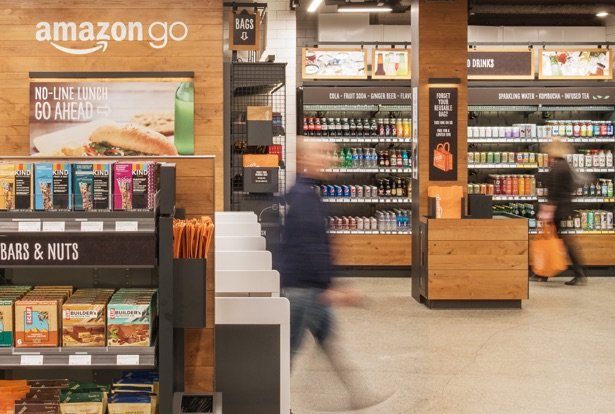![]()
Amazon is set to open its first bricks-and-mortar supermarket to the public on Monday, featuring Amazon-developed technology that eliminiates checkout queues.
Amazon Go, as the shop is called, resembles a high-end convenience store, and is located on the ground floor of the company’s new headquarters on Seventh Avenue in Seattle.
It will be closely watched due to the new shopping experience it introduces, which relies on sensors, cameras and artificial intelligence systems to detect what shoppers are picking up, billing them automatically.
If the Just Walk Out technology catches on with shoppers, it could mean changes for high street shopping comparable to those Amazon has brought in for internet-based retail.
No checkout
“We asked ourselves: what if we could create a shopping experience with no lines and no checkout?” Amazon says on the Amazon Go website. “Could we push the boundaries of computer vision and machine learning to create a store where customers could simply take what they want and go?”
The company first revealed Amazon Go’s existence in December 2016, initially opening it to Amazon employees and saying the public would be allowed in in early 2017.
The year’s delay was due to difficulties in training the AI systems to work properly, according to a number of reports. The systems had difficulties distinguishing shoppers with similar body types who were shopping nearby one another, and were unable to cope when children moved items, reports said.
Amazon has denied any difficulties, saying that it had initially wanted early public access to provide more data for machine learning purposes, but realised it could instead rely on a beta-testing programme.

Smartphone link
The removal of checkout tills doesn’t mean the shop is unstaffed – shop assistants stand by the entrance to greet those arriving and to check customers’ ages in the drinks section, and chefs work in the shop’s kitchen preparing meals.
After downloading a smartphone app and leaving a credit card on file, users enter through a gated turnstile, which scans the app to confirm their identity.
The shop’s monitoring systems then keep track of what they’re picking up and putting back while they’re in the shop, and they’re charged for what they’re still carrying when they walk through the exit.
The offerings include salads, sandwiches and beverages and freshly prepared meals, as well as fruit and vegetables, staples such as bread and milk, artisanal cheeses, locally made chocolates, and snacks from Whole Foods, the high-end retailer Amazon acquired last year for $13.7bn (£9.9bn).
Amazon has said it has no plans to bring the Go technology to Whole Foods, and has declined to speculate on whether it may open more Amazon Go locations.
Put your knowledge of artificial intelligence (AI) to the test. Try our quiz!




